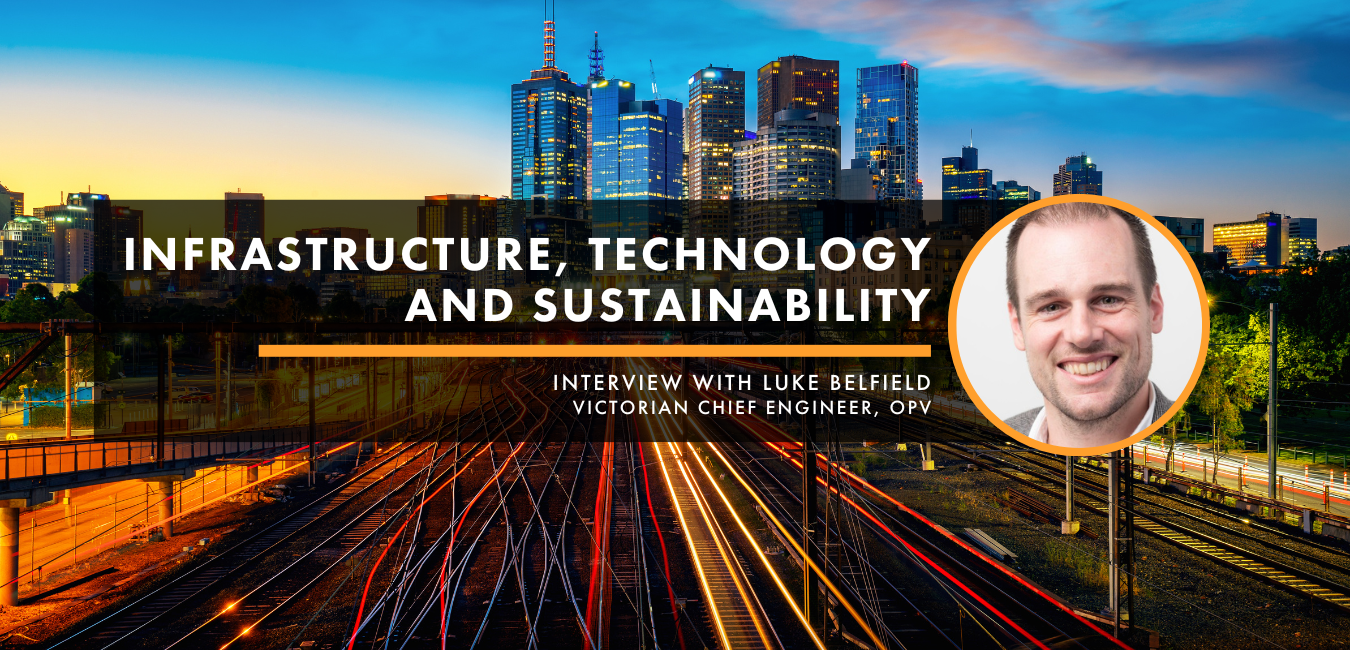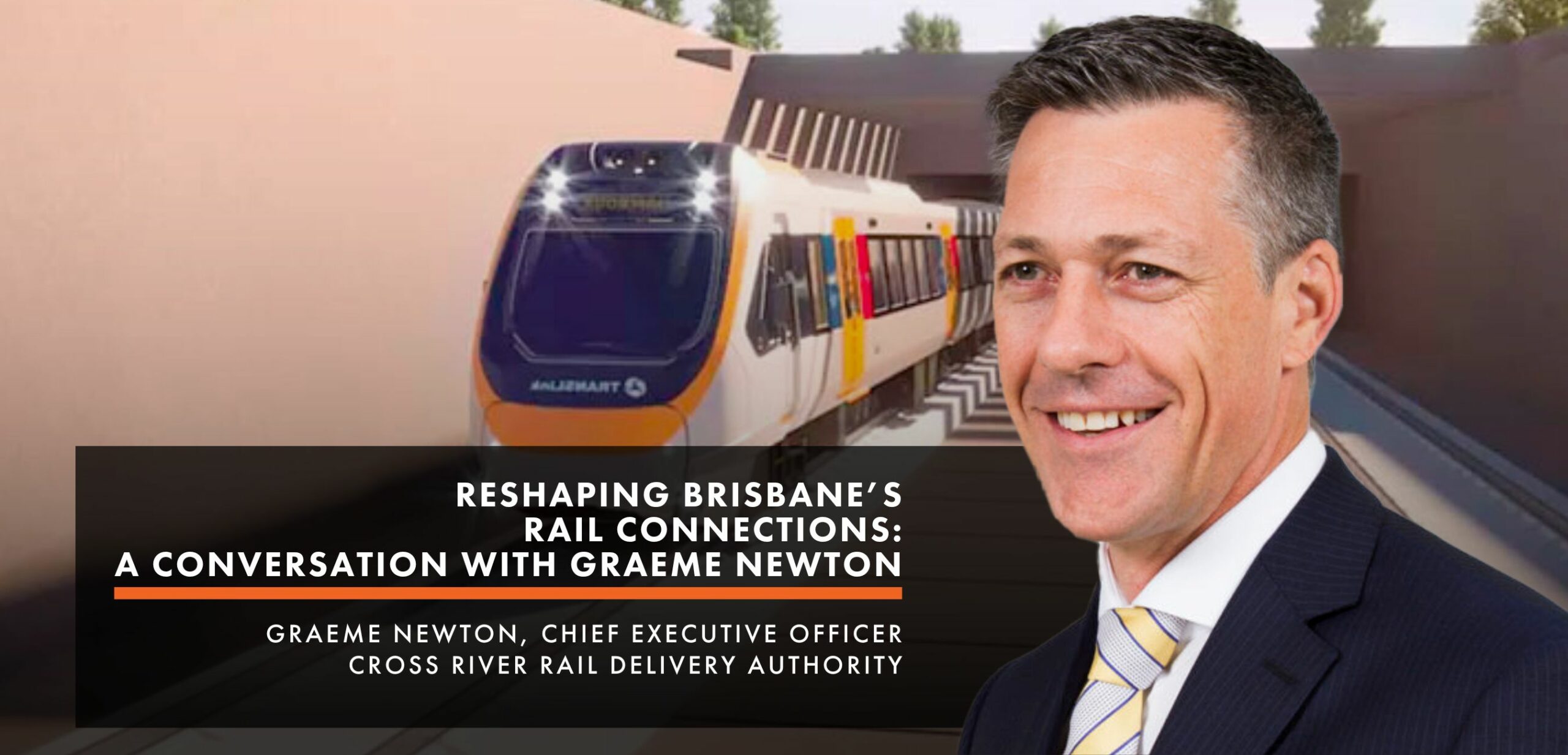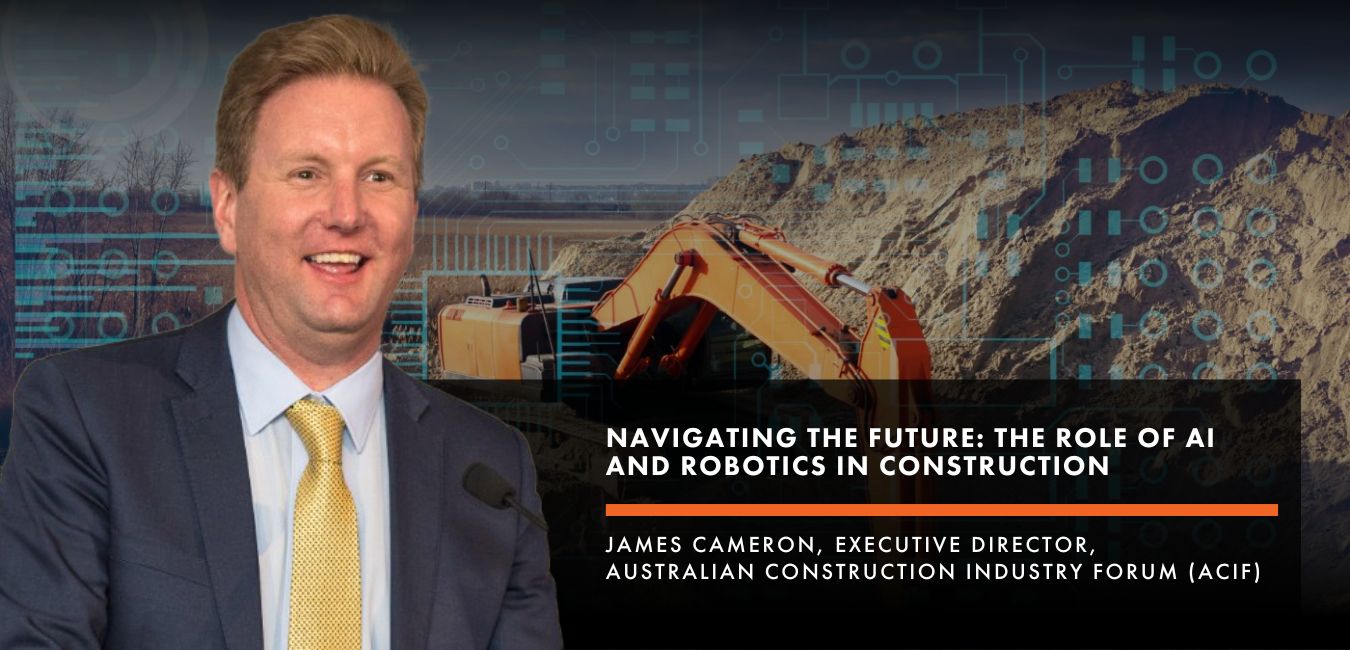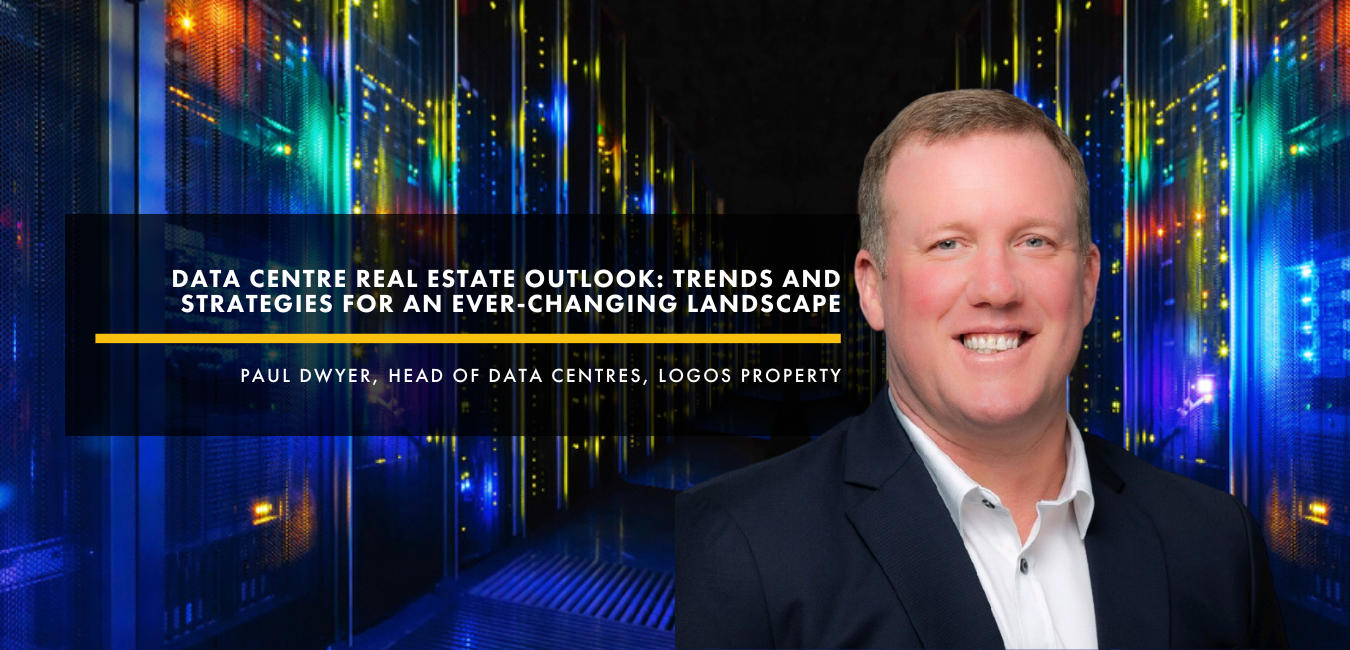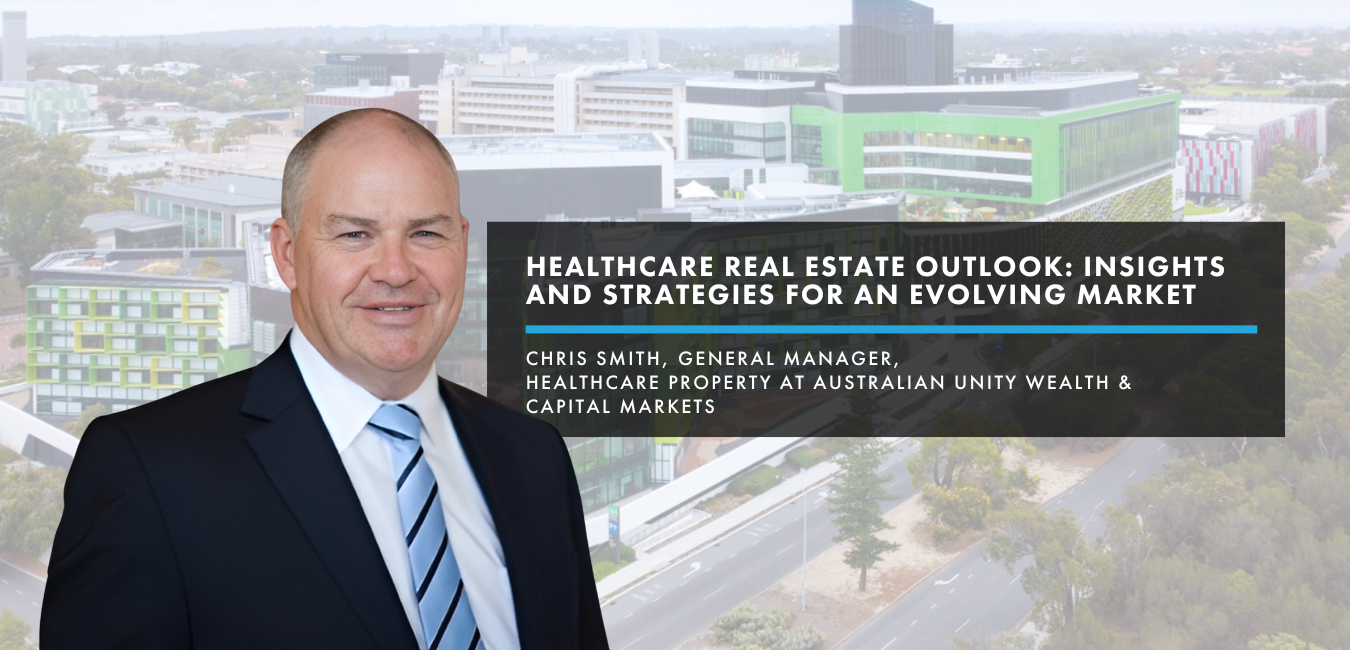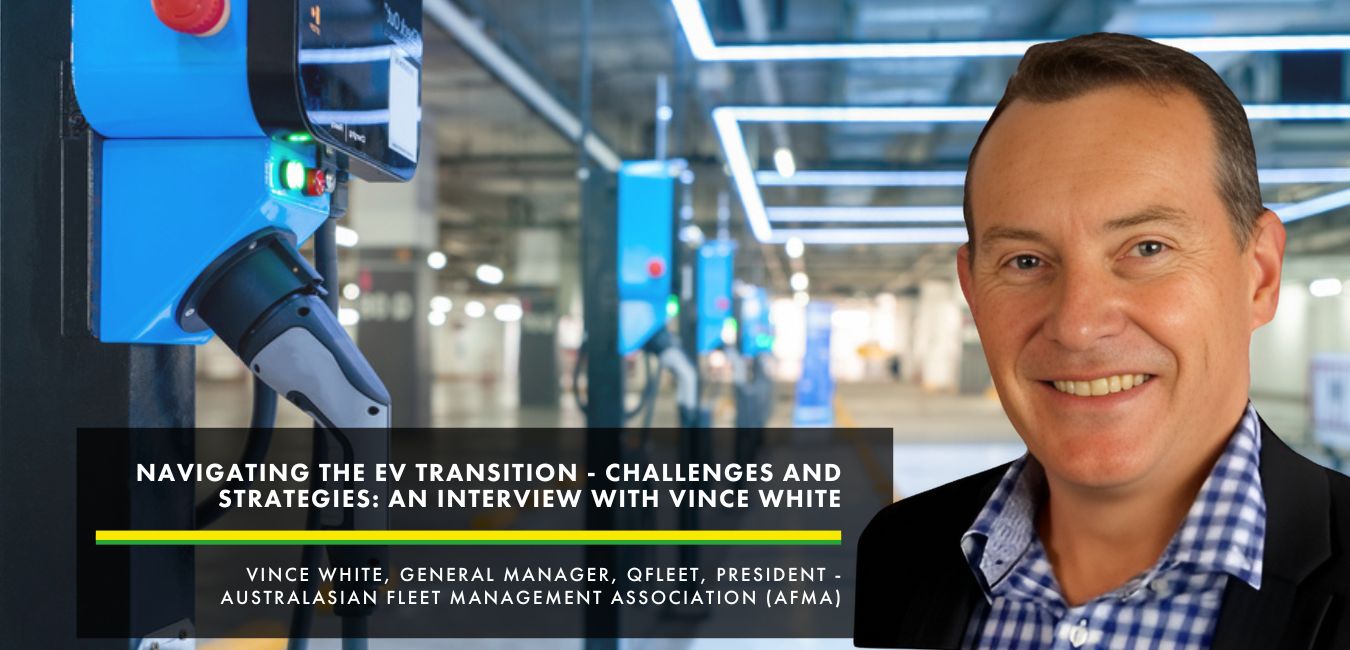FuturePlace Interview Spotlight, Luke Belfield.
FuturePlace spoke with Victorian Chief Engineer Luke Belfield at the Office of Projects Victoria (OPV). Luke shares his excitement on current infrastructure projects and the emerging technologies that will have the most significant impact on construction and infrastructure in Victoria.
FuturePlace: What lead you to pursue a career into Infrastructure/Project Management?
Luke Belfied: I’ve always been interested in why and how things work and how you can use technology to solve societal problems. So, it seemed very natural for me to start my career after my studies in engineering and computer science to work on major projects both in design and construction.
After transitioning from one industry to another, coupled with completing an MBA, I learned the importance of change management to drive efficiencies and innovation. Also, the critical nature is that we deliver projects for people to either enhance or provide a service they didn’t have and not just deliver a thing. My first experience with infrastructure projects was when I was working in management consulting. Through this experience, I was able to pursue a career in this industry and be in the fortunate position to not only help drive innovation but help deliver better services for Victoria.
FP: What current infrastructure projects are you most excited about?
Luke: It is an exciting time to be Victoria’s Chief Engineer as we deliver the biggest transformative infrastructure program in the state’s history. We’re not just building roads and railways, hospitals and schools but also delivering better services for Victoria and enhancing liveability.
The projects I’m most excited about? All the big build projects, including the West Gate Tunnel, the Metro Tunnel, the North East Link, the Level Crossing Removal Project, and the Regional Rail Revival are significant and reshape Victoria’s infrastructure landscape for the better. In the process also creating thousands of new jobs in construction and related industries, and Victoria becoming more attractive for businesses with upgraded infrastructure in place.
But it’s not just about the economy, it’s about the people. Upgrades to hospitals and schools across the state will ensure better access to high-quality healthcare and education, meeting the needs of Victorians.
Liveability is a top priority, and we’re all in for sustainability. Investing in renewable energy and other sustainable infrastructure will improve the quality of life for Victorians, while the removal of level crossings and the creation of open spaces will make our communities thrive.
With a keen focus on sustainability, we’re driving Victoria’s transition to net zero, taking the much needed steps to reduce the environmental impact of our infrastructure.
As Victorian Chief Engineer, I’m thrilled to be assisting the state deliver these game-changing projects that will elevate Victoria to new heights and create a brighter future for all.
FP: What emerging technologies are you seeing that will have the most impact on construction and infrastructure projects?
Luke: The future of construction and infrastructure is being reshaped by cutting-edge technologies, and here are the top three game-changers that are set to make the biggest impact:
- Federated 3D design models: Say goodbye to traditional 2D drawings! These digital representations of projects’ physical and functional characteristics are revolutionising collaboration and coordination among stakeholders. From efficient construction planning to streamlined project management, these models are reducing costs, improving productivity, and enhancing decision-making.
- Drones and robotics: The construction site of tomorrow will be a hive of automated activity, with drones and robotics taking centre stage. From surveying to site inspections to material delivery, these technologies are boosting safety, accuracy, and efficiency, especially in challenging or hazardous environments. Imagine progress payments linked to actual work completed on-site, made possible by these cutting-edge tools.
- Augmented Reality (AR) and Virtual Reality (VR): Step into a new dimension of project visualisation and stakeholder engagement with AR and VR technologies. Immersive visualisations, virtual walkthroughs, and real-time simulations are enhancing project communication, coordination, and issue resolution. With these technologies, project teams can minimise risks, speed up decision-making, and achieve better project outcomes.
To stay ahead of the game, it’s crucial for our government agencies to proactively embrace innovation, collaborate with industry partners, and invest in necessary resources and training. By effectively adopting and implementing these emerging technologies, we can tackle the productivity challenge and ensure successful and sustainable project delivery.
FP : What does ‘digital by default’ mean to you? And is it a reality?
Luke: ‘Digital by default’ is the way of the future, and it’s more than not just a buzzword – it’s a reality that can transform the construction industry. Embracing digital tools, technologies, and processes as the primary method for managing projects is essential to staying competitive and delivering successful outcomes for Victorians.
No more relying on outdated paper-based methods. Instead, we can leverage 3D design software to create digital models, use digital tools to manage schedules and budgets and deploy drones and other digital technologies for surveys and inspections. The benefits are undeniable – streamlined workflows, improved collaboration, reduced errors and rework, and enhanced communication among stakeholders.
But it’s not just about technology. It’s about ensuring that all team members have access to the necessary tools and training to reap the benefits of going digital. Balancing the needs and capabilities of all stakeholders is crucial to ensure that the adoption of digital tools is inclusive and effective.
As the Victorian Chief Engineer, I am committed to making ‘digital by default’ the minimum standard. It’s not just a trend – it’s a proven strategy to increase efficiency, enhance project outcomes, and achieve our goals. By embracing digital tools and technologies, we can drive the construction industry forward, delivering projects that are efficient, sustainable, and successful for all stakeholders involved. Let’s make the future digital, and let’s make it happen now.
FP: Can you explain a little bit about OPV’s net zero strategy?
Luke: Victoria’s net zero strategy is a bold and ambitious plan to achieve carbon neutrality by 2050, and we’re taking decisive actions to make it a reality. As engineers, we’re passionate about delivering more with less and driving accountability in how we design, build, and operate our projects.
It’s not just about reducing greenhouse gas emissions. The state government’s net zero strategy also presents opportunities to create new jobs and foster economic growth in sustainable industries. By embracing innovative technologies, materials, and practices, we can build a more resilient and sustainable future for all Victorians.
Net zero strategy is not just a distant vision – it’s a tangible commitment backed by actions. We are determined to lead the way in driving positive change and making a meaningful contribution to mitigating climate change. Through collaborative efforts and a relentless focus on sustainability, we can achieve our net zero goal and create a better future for generations to come. Let’s take action now and pave the way to a greener, brighter, and more sustainable future for Victoria.
FP: How do you help and develop the skills and capability of your team?
Luke: As the Victorian Chief Engineer, I am committed to empowering my team and the entire Victorian Government with the skills and capabilities needed for success. Here’s how we’re making it happen:
Digital Build Training Program: Our introductory training program raises awareness of OPV’s Digital Build initiatives and equips participants with the skills to lead digital transformation in construction and major projects. Led by our senior team members, this program covers topics like the role of digital in innovation, information management, and the benefits of digital practices.
Mentorship and Coaching: We believe in the power of mentorship and coaching in skill development. That’s why we support an intern/graduate program and provide opportunities for mentorship, allowing emerging talent to learn from experienced professionals and grow their skills.
By investing in training and mentorship, we’re fostering a culture of continuous learning and innovation within OPV and the broader Victorian Government. Together, we’re building a skilled workforce that is well-equipped to tackle the challenges of modern construction and deliver successful projects for the people of Victoria.
FP: When it comes to cost, how do we ensure that projects have a lower risk of going over budget?
Luke: To ensure projects stay on budget, we follow a strategic approach supported by guidance available on the OPV website:
- Accurate cost estimation and budgeting from the get-go, even in business cases, to set realistic budgets and tackle potential risks head-on.
- Value engineering techniques that identify and eliminate unnecessary costs while maintaining project performance, showcased through successful Digital Build Pilot Showcases.
- Procurement and contract management aligned with the Digital Asset Policy, optimising costs and promoting digital technologies and processes.
- Continuous monitoring and reporting for prompt corrective actions, keeping projects on track and on budget.
With these strategies, we minimise financial risks and ensure efficient resource utilisation, resulting in successful project delivery without budget overruns.
FP: What do you think of digital twins and its relevance in the infrastructure space today?
Luke: Digital twins are game-changers for government and infrastructure. These virtual replicas, including 3D, 2D or 1D, of physical assets provide real-time insights into performance, enabling efficient and better decision-making. They also provide information in a way that is more accessible that enables greater collaboration among stakeholders, improving communication and coordination. With data from sensors and drones, digital twins optimise asset performance, reduce downtime, and cut costs. Digital twins are a powerful technology that’s transforming the infrastructure space, enhancing efficiency, reducing costs, and improving asset performance. Their potential is immense and their relevance is undeniable in today’s infrastructure landscape.
FP: Where do you see the industry in 10 years?
Luke: Digital technologies will hopefully be even more prevalent, and sustainability will take centre stage. Offsite and modular construction will revolutionise efficiency and costs. Collaboration and integration will be key, breaking down silos for improved project outcomes. Automation technologies will advance, from new robotic systems to streamlined workflows. Staying ahead of emerging trends is crucial to delivering high-quality projects that meet evolving needs in the ever-changing landscape of construction and infrastructure.
FP: Is the digital transformation going to be a game changer for the industry?
Luke: Digital transformation is a game changer for our industry. It’s already revolutionising project delivery and operations, increasing efficiency, reducing costs, and enhancing the citizens experience. With automation, AI, and real-time data, we can optimise workflows, boost agility, and deliver more with less.
Take Victoria’s Digital Asset Strategy (VDAS) as an example. Leveraging digital twins, IoT, and data analytics, VDAS aims to optimise the asset lifecycle, improve productivity, and enhance resilience. But success requires a clear strategy, effective leadership, and managing change.
Embracing digital transformation unlocks immense potential for growth and innovation. It’s time to leverage digital technologies to transform our industry, stay competitive, and create a brighter future for construction and infrastructure. Get on board or get left behind!
FCON23 – Future of Construction Summit DISRUPTED
Luke will be speaking the 3rd annual Future of Construction Summit, taking place on 3-4 May 2023 in Melbourne. Where 400+ key industry leaders will come together to challenge the status quo, collaborate, find new ideas and source partners. Appropriately themed ‘FCON disrupted’, the focus of the 2023 Summit is on transformation and how to achieve this successfully through brave leadership, policy reform, new approaches and emerging technologies.

